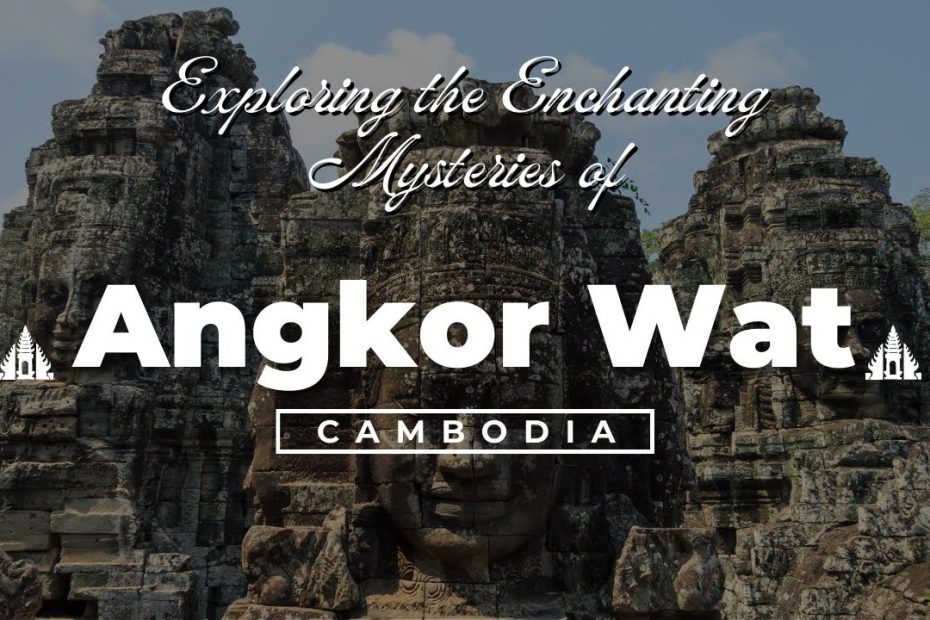Table of Contents
Introduction
Cambodia is a country with a long, rich, and fascinating ancient history. But much of its past remains shrouded in mystery. Now, archaeologists are unraveling some of Cambodia’s ancient secrets and unveiling its forgotten mysteries.
This article will explore Cambodia’s ancient temples, recent archaeological discoveries, and the ancient mysteries still left to uncover. Join us on a journey through Cambodia’s ancient past.
Angkor Wat
The most famous of Cambodia’s ancient sites is the magnificent Angkor Wat temple complex. Built in the 12th century, Angkor Wat is the largest religious monument in the world. This jaw-dropping temple complex was built by the Khmer Empire and served as the state temple and political center of the Khmer capital.
Angkor Wat combines temple mountain, standard temple layout, and quincunx shape, all arranged harmoniously over 200 hectares. Its sheer size and intricate decorative flourishes make it a marvel of ancient engineering and artistry. Angkor Wat is a symbol of Cambodia and a must-see for anyone interested in Cambodia’s ancient mysteries.
Archaeology in Angkor
For centuries, Angkor Wat and the surrounding Angkor complex silently stood in the Cambodian jungle. Archaeology has brought Angkor’s history and culture back to life.
Through meticulous archaeological study, researchers have uncovered fascinating details about the Angkorian civilization that built Angkor. Advanced imaging techniques like LiDAR have revealed new information about how Angkor’s sprawling urban community was structured.
Ongoing archaeological digs keep discovering relics that give us windows into everyday life in Angkor – things like ceramics, tools, and inscriptions. There are still many more secrets to uncover about the ancient Khmer Empire buried beneath Angkor’s temples.
Preah Vihear Temple
Another important Cambodian temple shrouded in mystery is Preah Vihear. Perched precariously atop a cliff in northern Cambodia, Preah Vihear has stunning views of the plains below.
Preah Vihear was built in the 9th – 11th centuries, and its remote cliffside location made it strategically important. In modern times, Cambodia and neighboring Thailand disputed who rightfully owned Preah Vihear and its surroundings – the International Court of Justice eventually ruled in Cambodia’s favor in 1962.
Preah Vihear is architecturally significant, and excavations have revealed fascinating ancient carvings and decorative elements. But difficult access means archaeology at the temple is still in its early stages. More fieldwork at Preah Vihear will surely uncover more clues about the ancient civilizations that built it.
Koh Ker
Far from the famous Angkor complex, the ruins of Koh Ker contain some of Cambodia’s most intriguing temple mysteries. Built in the 10th century, Koh Ker includes a seven-tiered pyramid temple, one of the largest of its kind from the Angkor period.
Koh Ker’s temples are adorned with massive sculptures like a 6-meter stone guardian figure. Inscriptions found at Koh Ker provide clues about royal succession and power struggles of the time. But there is still much to learn about Koh Ker’s history and purpose. With more research, archaeologists hope to better understand why this remote temple complex was built.
Remaining Mysteries
Thanks to intrepid archaeology, we now know much more about ancient Cambodia than we did just decades ago. But many mysteries remain unsolved.
Researchers still have limited understanding of how everyday Cambodians lived and worked during the Angkor period. There is also much left to learn about how Angkor’s complex urban system functioned and thrived for centuries.
More archaeological fieldwork throughout Cambodia is needed to find unknown or lost temple sites and fully understand how ancient civilizations engineered massive construction projects. Cambodia’s tropical environment makes this work challenging, but every discovery yields new pieces of Cambodia’s ancient past.
Conclusion
Cambodia’s ancient temples and archaeology give us exciting glimpses into its mysterious ancient past. But under the jungle growth and tropical humidity, many more puzzles await discovery.
Whether it’s deciphering inscriptions, uncovering artwork, or analyzing architectural details, archaeologists have only begun to unveil Cambodia’s ancient mysteries. As fieldwork continues, Cambodia’s astonishing history will come into clearer focus. The ancient past is like a mosaic – patient work can unveil the full picture, piece by piece.
FAQs
What is the largest ancient temple site in Cambodia?
The largest ancient temple site in Cambodia is Angkor Wat and the surrounding Angkor temple complex outside Siem Reap. Angkor was the capital of the powerful Khmer Empire from the 9th-15th centuries.
When was Angkor Wat built?
Angkor Wat was built in the early 12th century by King Suryavarman II of the Khmer Empire. It took over 30 years to complete construction of the expansive temple complex.
Which ancient temple is located on a cliff?
Preah Vihear is an ancient Hindu temple complex dramatically situated atop a 525-meter cliff in northern Cambodia. It offers breathtaking views of the plains below.
What major archaeological discoveries have been made in Cambodia recently?
Recent major discoveries include using LiDAR surveys to map Angkor’s sprawling urban grid, finding ancient hospitals and water systems around temples, and uncovering remote pyramid temples like Koh Ker.
What mysteries remain about Cambodia’s ancient civilizations?
Many details are still unknown about the everyday lives of ancient Cambodians, how Angkor functioned as a city, the full extent of the Khmer Empire, lost temple sites still not uncovered, and more. Active archaeological work continues to uncover Cambodia’s ancient mysteries.
